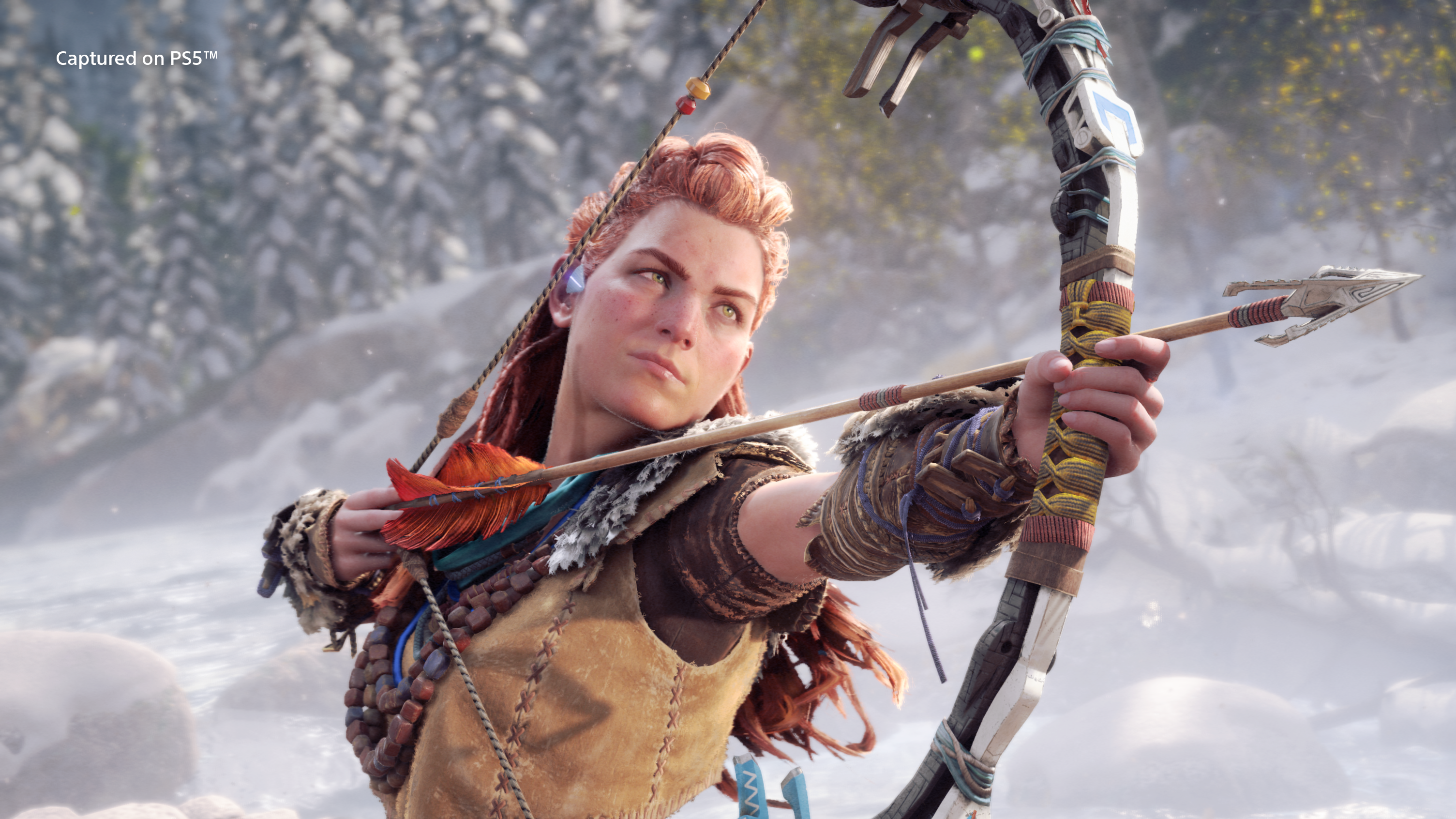
Time played: 42 hours
Platform: PS5
Horizon Zero Dawn didn’t demand a sequel. Its story felt complete when the credits rolled. We had taken Aloy from being an outcast of the Nora tribe to near-singlehandedly stopping a robotic apocalypse. That sense of resolution is increasingly rare for big-budget games of this size.
It leaves the question so did a Zero Dawn sequel need to be made at all? Of course, we wanted to return to the strange futuristic, prehistoric Earth, where robotic dinosaurs stalk the land and tribes of humans try to eke out a living beneath their feet. But did it need to exist?
In Horizon Forbidden West, Guerrilla Games proves Aloy’s story does indeed deserve another chapter. The game’s a grand technical achievement that feels “next-generation” and, importantly, also captures smaller, more human details, too.
Weight of the world
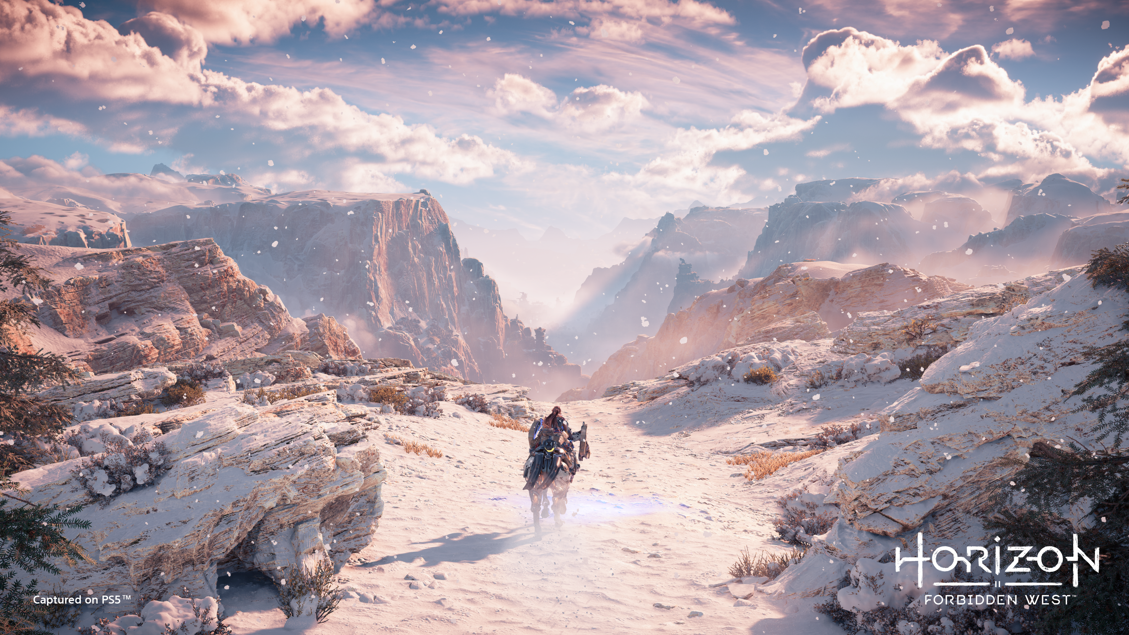
In Horizon Zero Dawn, we take Aloy nothing to becoming a world-saving hero. Forbidden West reveals the burden of that success. Her quest to find a solution to the Blight, a red plague that is sweeping the wildlife and foliage alike, pushes her to head West, towards California. This land has been called the Forbidden West by the Carja due to the violent Tanakth occupying the region. Despite all her achievements in the last game, Aloy is a stranger in this new setting. She’s not alone though. Varl and Erend, her two companions from the first game are along for the right, but the weight of her mission distances her from her friends. She is frustrated with the world. She is trying to save the planet from the Blight sweeping the land and yet she is running up against petty politics and squabbles.
Soon after arriving in the Forbidden West she becomes embroiled in the infighting of the Tenakth and a rebel tribe run by a warmonger named Regalla who has been taught how to Override machines. This chase sends her on a massive journey that eventually widens the scope of the game's sci-fi setting much further than the previous game.
While never uncaring, especially to the downtrodden and those in need, at the start of the game, Aloy is running from social connections. She quietly slinks off into the night to avoid accepting the help of Varl, pushes away Erend having left him after the first game without a word. She’s forcing herself into a lonely existence as she doesn’t want to burden others with the weight of her own.
This is where the sequel shines. The story remains personal. Forbidden West is about reconnecting with humanity and forming, or reforming, friendships. And it works because of the rich characters that fill the world. Varl and Erend return, but the game has a broader interest in 'putting together a team'. That includes wonderful new additions to Aloy’s inner circle like Zo, a fierce personality from a largely peaceful tribe, and Kotallo, a brooding warrior dealing with the recent loss of an arm. Each character brings new perspectives, relating events back to you from a different angle. It fleshes out the world of Forbidden West and makes it feel lived in.
The friends we made along the way
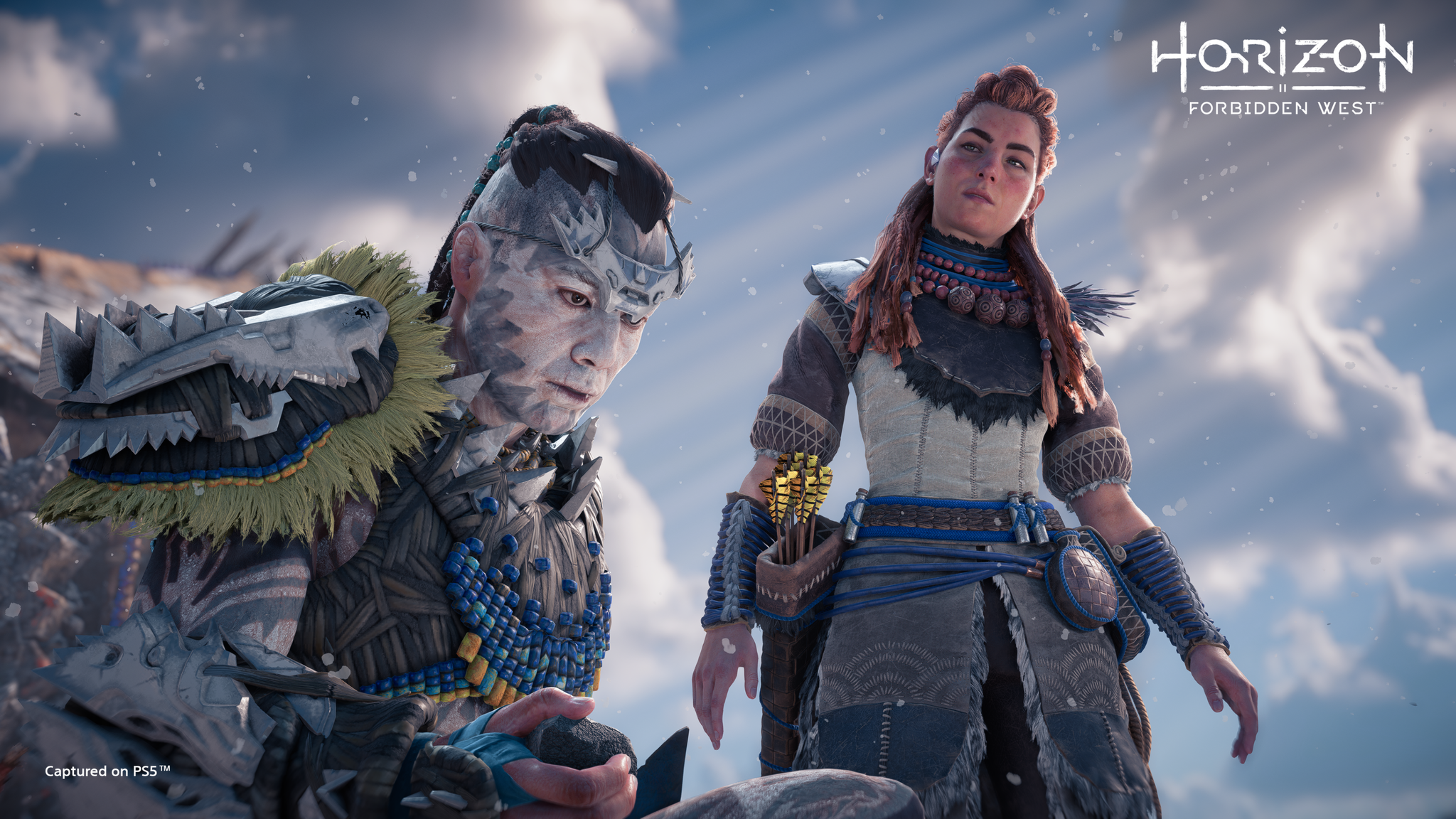
This focus on character in Forbidden West is clear from how much time you spend in dialogue trees. If you want, you can spend hours talking to your companions. While this is a linear story with only a handful of branches to choose between, we still formed deep relationships with these characters. It may not have the choices of Mass Effect and Dragon Age, but we felt as involved with our companions as we would in those classic RPGs. It’s ultimately what makes Forbidden West more than just another open-world, action game.
Guerrilla Games has always made beautiful games but here the team’s technical art serves the story. Exceptional animation brings the characters you meet to life. Your companions’ faces come alive when they react to Aloy. The moments when you see characters talk to each other are some of the most impressive in the game. Coming back to base to see what your friends have to say about events cements the stakes of the plot.
You aren’t just told about the threat Regalla and her rebels pose to the region, you see the fear and anger it evokes in those around you. Seeing Erend struggle with tempering his inherent want to smash everything with a hammer or Varl’s enthusiasm to support Aloy all land because of the emotion conveyed on their face. For a story about finding your humanity, being able to see that life reflected on the people around you hammers that theme home.
The choices you do make are surprisingly small but are actually one of Forbidden West’s most impactful features. Even minor characters will update their dialogue based on your actions. Their dialogue updates are based on things as simple as who you talked to first after returning to your base.
Normally, going around an encampment talking to all the NPCs would be an incidental action, checking off a to-do list before heading back into the world. But when characters comment on who you’ve already spoken to, slighted you didn’t catch up with them first, it gives weight to the smallest of choices. It’s off-hand comments, such as a Kotallo saying he overheard you were bringing other companions with you on a mission from a conversation held two minutes earlier. It creates a real tangibility with the friendships your creating and the situations you find yourself in.
You may not be making big decisions, like siding with one tribe over another, but this focus on revealing the choices in your incidental actions brings you into the world. Grounding you was a big focus of Zero Dawn as lore entries and vantage points would flesh out the sights around you, meshing together the old world and new. This attention to NPC dialogue furthers that philosophy with more immediacy though, bringing you as a player into the lives of the characters in the world you’re visiting.
A beautiful, forbidding world
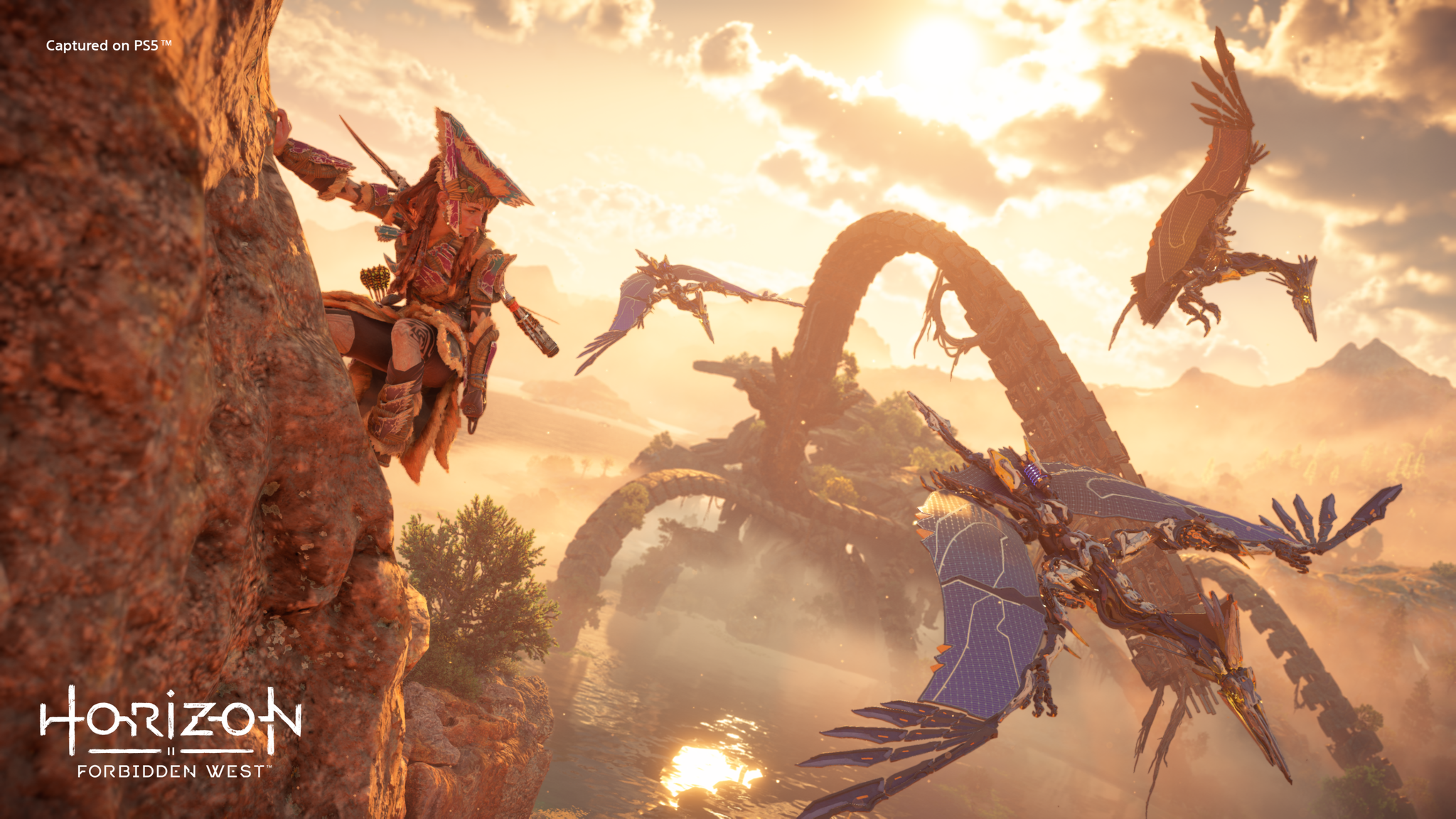
Horizon Forbidden West is one of the best-looking games we’ve seen. The game’s world is a slice of the southwest USA, condensed to be able to travel from Las Vegas and San Francisco in the space of ten minutes. It’s a jarring scale if you think too hard about it, but it doesn’t detract from how well-realized this is. There is a breadth of biomes to explore, rocky mountains give way to desolate deserts, lush jungles, icy wastes, deep blue oceans, and derelict cities.
However, the game comes alive in the details - chipped and dirty stone on mountain paths, foliage swaying in the tree, how the sun glistens off soft snow -, and it’s all picked out by the ever-changing weather and climate. It's beautiful to watch.
This isn’t a peaceful world though, Horizon’s mechanical creatures return leaving an impressive impression on the world. Machines new and old fill out these environments. If left to their own devices, they will often have their own behavior or function. Such as Grimhorns seeding the land or Fireclaws barreling out of wooded areas, causing a burst of flame where it goes. And, yet, the mechanical and the natural don’t juxtapose. They mix and interact, making the world feel like one coherent whole.
Weary feet
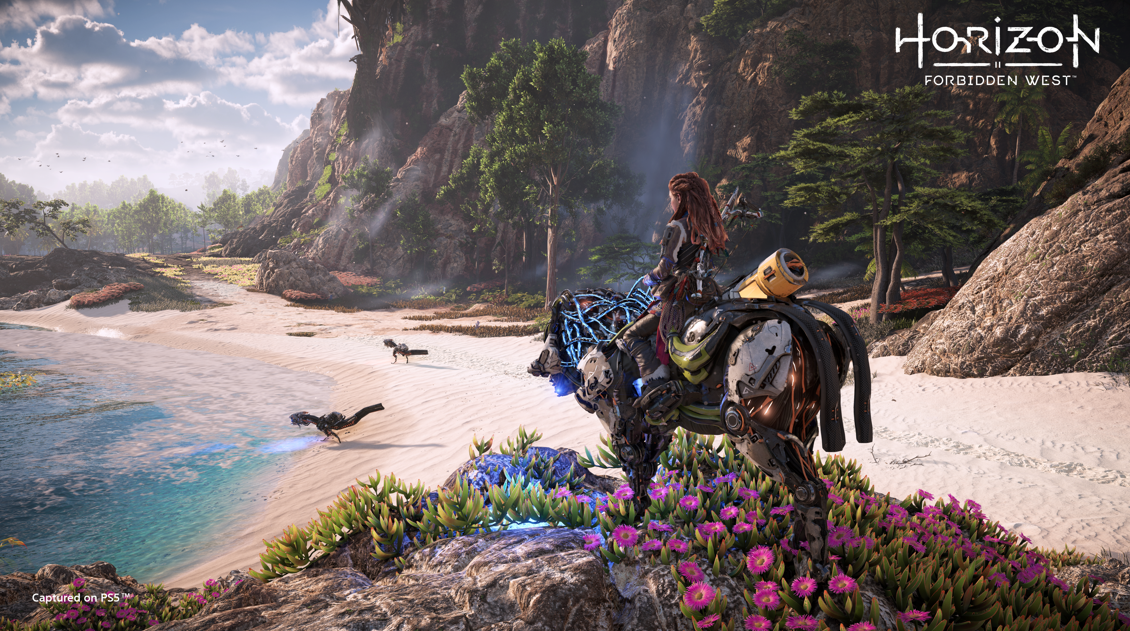
While beautiful to look at, traveling across the Forbidden West can be a torrid affair, however. Aloy is a challenge to maneuver more often than she should be. Guerrilla gives you the ability to fine-tune your movement in the settings but it only goes so far. It's not uncommon for her to fail to grab onto ledges that you are clearly aiming for, sending her falling to the bottom of a long climb. She can also fail to mount ladders and sometimes snags on the scenery. Her movements are imprecise and interrupt your flow.
It’s frustrating when the game looks so good but is a struggle to interact with. At its worst, this can get you killed, which can be eye-rolling annoying. There is a missing fluidity to the movement that the experience is begging for. Also, when so much work has gone into putting you in Aloy’s shoes, it jars all the more when you stub your toe.
This imprecise and clunky maneuverability becomes a particular nightmare when using a mount. They can often be dragged from side to side or come to a halt as they try to navigate the world.
Exploration and platforming are a huge part of Forbidden West too, so this is a significant problem. It’s sometimes a struggle to interact with the world smoothly. It doesn’t ruin the game, but it holds it back more often than it should.
Epic combat
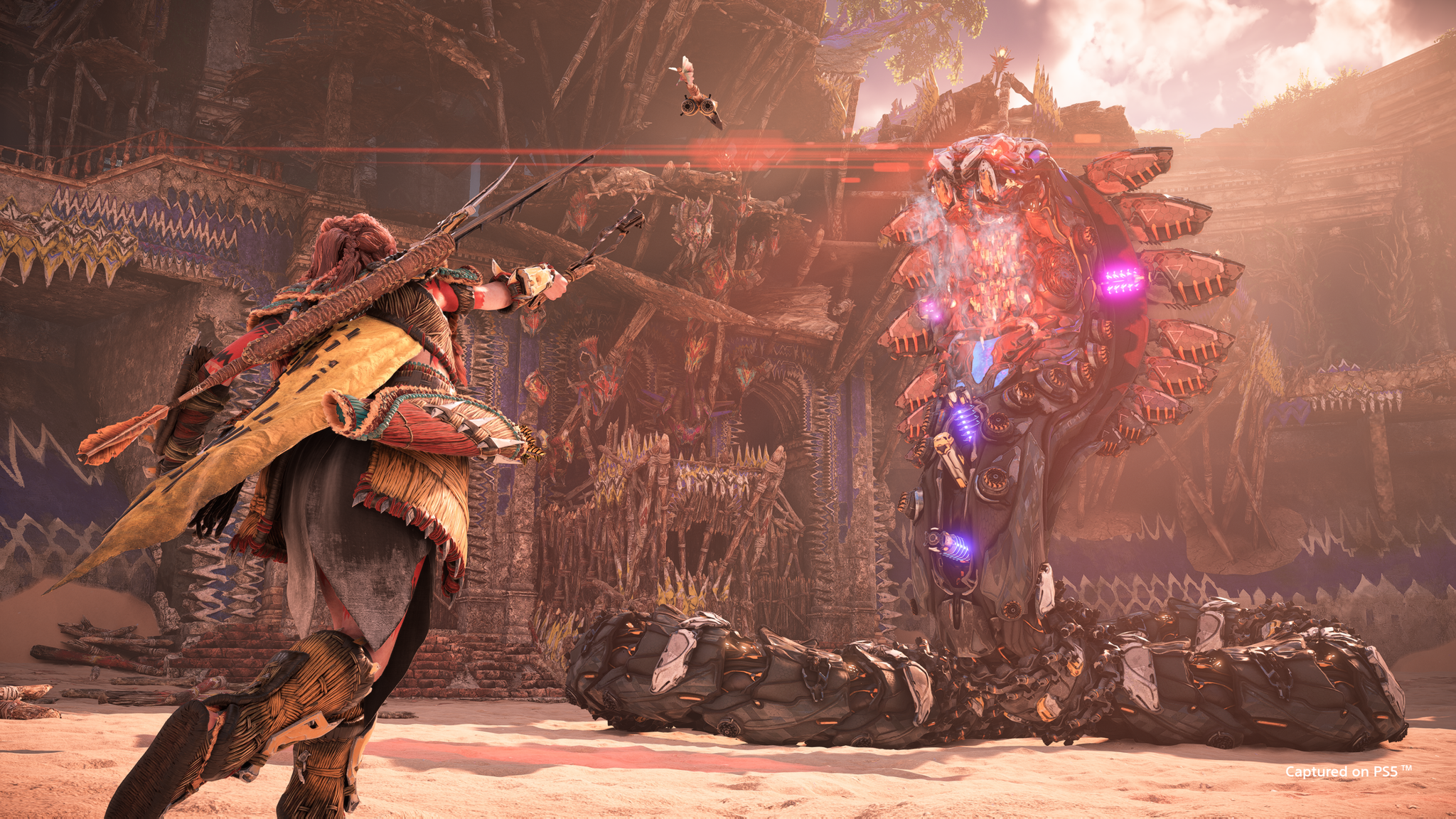
Horizon Forbidden West’s combat is an interesting dance to master that does have a surprising amount of depth to it. On top of the machines she must take down, Aloy will also spend a fairly significant time fighting human rebels of various tribes. Fighting people is serviceable, however, often quite flat as the best strategy remains powerful throughout the game - use Aloy’s time slow ability to shoot an attacker in the head (or break their helmet to then shoot them in the head.)
The game really comes to life when trying to take down the machines though. Recognizing weaknesses in a hulking beast and exploiting them with your exotic arsenal is a blast. Taking on an Apex Tideripper with nothing but a couple of thrown-together electrical traps and some acid-tipped arrows is a hell of an experience. These elemental weaknesses create a hidden depth, that comes down to your preparation and what weapons you bring to a fight. As in Zero Dawn, it pays off to take the time to fill the battlefield with traps before starting a fight. Aloy is, after all, a hunter by training, so it’s great that when you act like she would and it pays off.
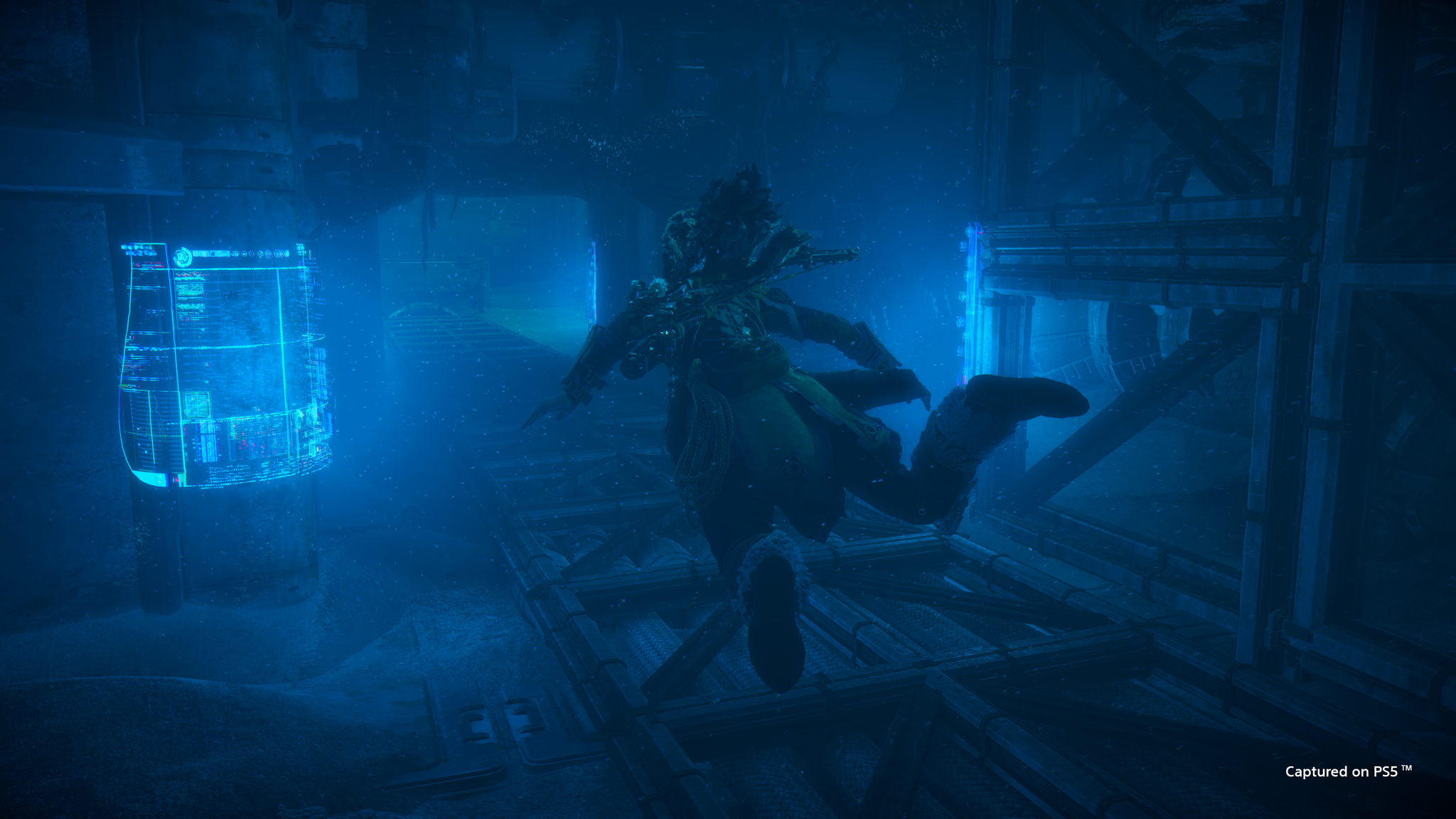
In the epic battles against Forbidden West’s massive machines, you need to master attack patterns, manage status effects, and look out for weak spots. These fights can be drawn out, especially in the early game when you’re still weak. And, while the battles are less demanding than those in games like Monster Hunter, they offer a faster, more fluid execution of a similar idea.
As in Zero Dawn, you can also override these machines and have them fight alongside you. While many are on a timer, only fighting for you for a little while, when you get two hulking creatures to face off, it’s wildly impressive. Sneaking through the grass, overriding a Tremortusk, and having it fire on an aggressive Thunderjaw is an impressive spectacle. Setting up a trap for that enemy to then barrel into after, setting off a Rube Goldberg machine of destruction… it’s a sight to behold when it’s firing on all cylinders. In the scale of the Horizon games, you are a small, puny human in a dangerous world. Nothing quite brings that home-like watching giant robotic dinosaurs tear each other apart before your eyes.
Justified
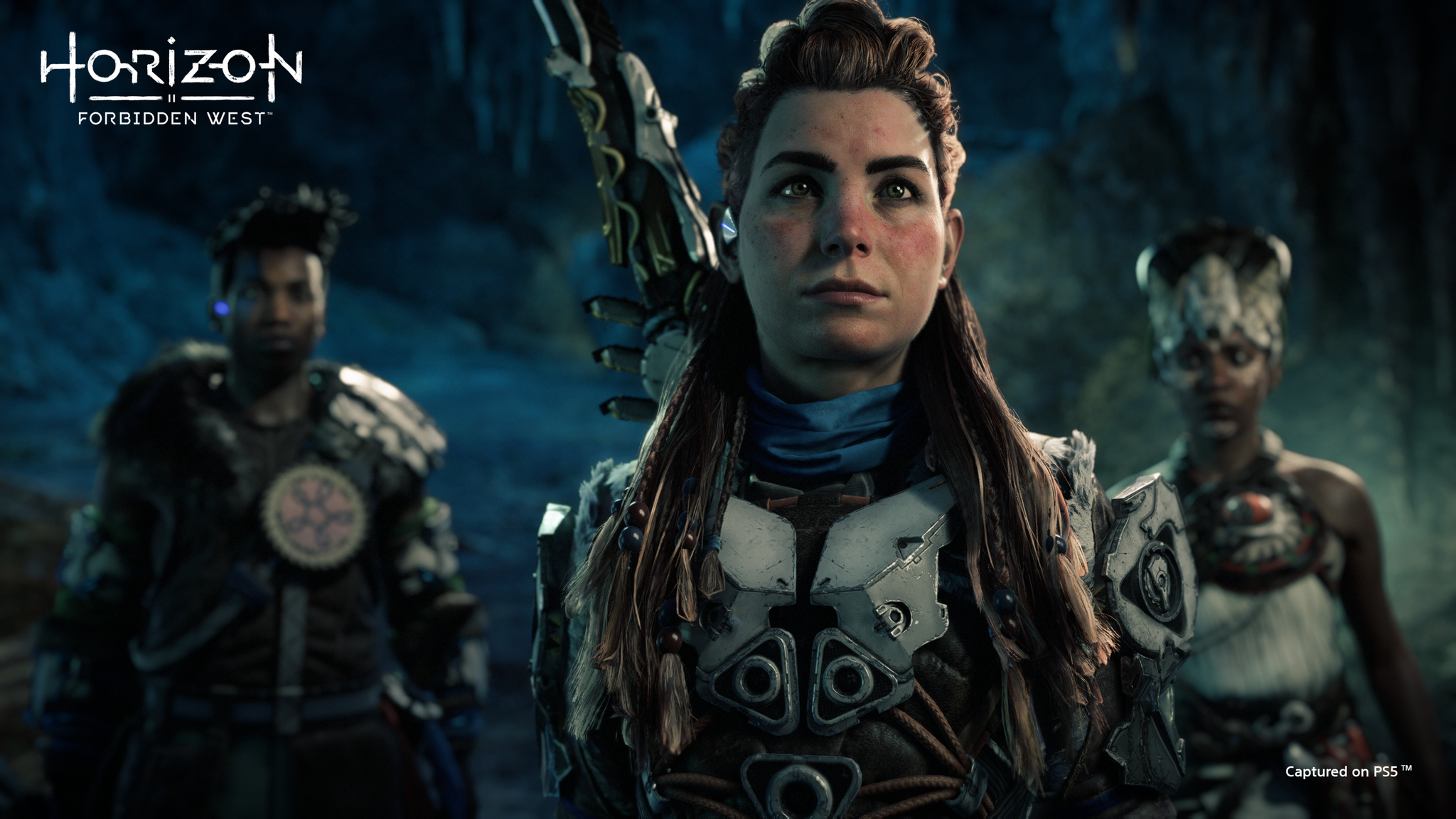
Horizon Forbidden West is not without issue. It can at times feel like form over function, with movement and traversal being a consistent issue. However, despite all of that, it all comes together becoming an impressive cohesive whole. When it is firing on all cylinders, it’s a marvel and stands at the peak of the medium. It’s just a shame that it doesn’t always put its best foot forward.
The developer’s real achievement however is in Forbidden West’s characters. Zero Dawn didn’t need a sequel but the time spent with this game’s cast justifies it more than any of its many impressive boss fights or beautiful vistas. While the scale and visuals never cease to astonish, underneath all that plating, the lasting impact is a human story about reconnecting with what is important in life - the ones around us.
from TechRadar - All the latest technology news https://ift.tt/5j4lHUX

No comments:
Post a Comment